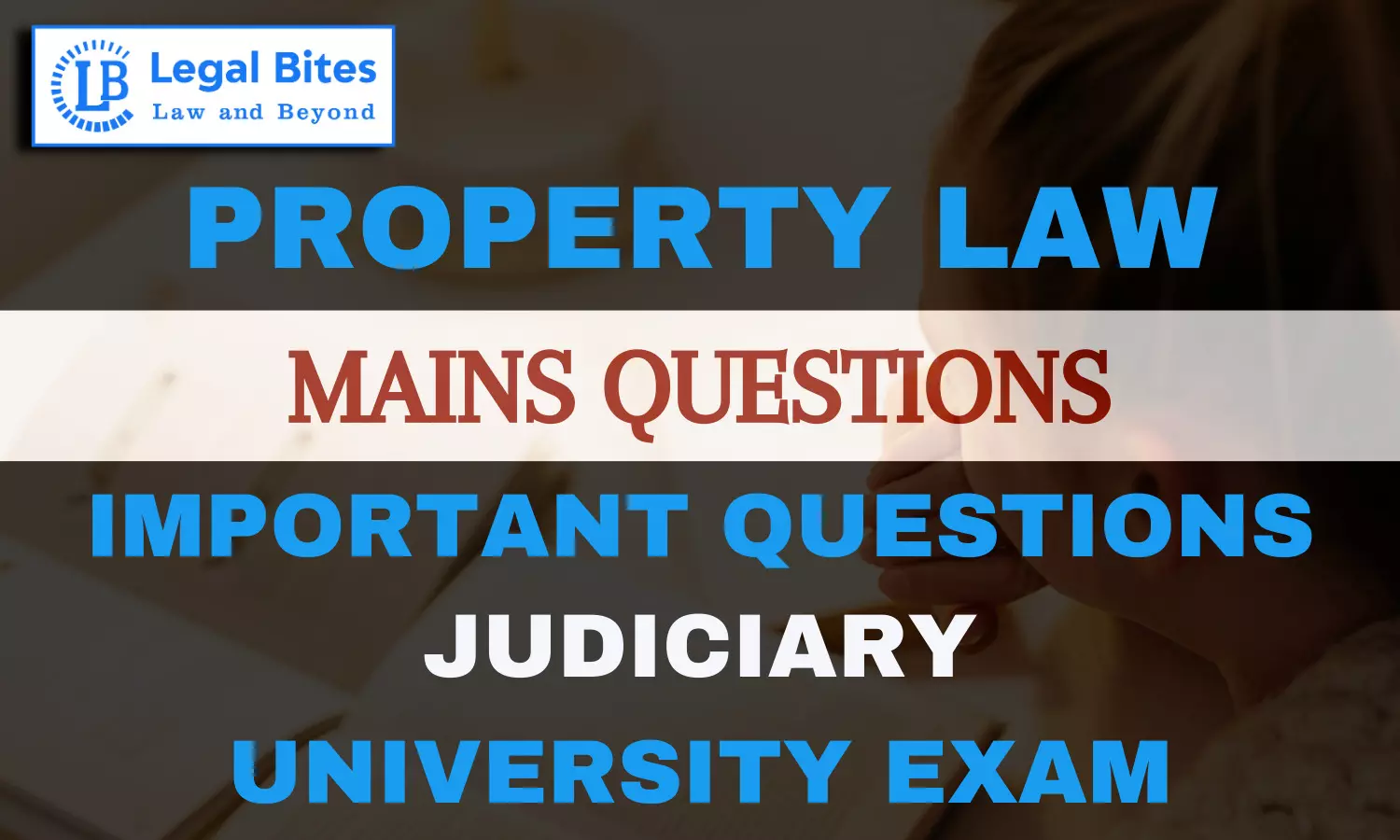Analyse briefly the law relating to fraudulent transfers.
Find the answer to the mains question of Property Law only on Legal Bites.

Question: Analyse briefly the law relating to fraudulent transfers. [UPJS 1987]OrWhat is fraudulent transfer. [MPJS 2016]Find the answer to the mains question of Property Law only on Legal Bites. [Analyse briefly the law relating to fraudulent transfers.]AnswerThe law relating to fraudulent transfers is elucidated in Section 53 of the Transfer of Property Act, 1882. According to this section, every property owner has the right to transfer their property, but such transfers must be made...
Question: Analyse briefly the law relating to fraudulent transfers. [UPJS 1987]OrWhat is fraudulent transfer. [MPJS 2016]
Find the answer to the mains question of Property Law only on Legal Bites. [Analyse briefly the law relating to fraudulent transfers.]
Answer
The law relating to fraudulent transfers is elucidated in Section 53 of the Transfer of Property Act, 1882. According to this section, every property owner has the right to transfer their property, but such transfers must be made with bona fide intentions. If a transfer is executed with a fraudulent intention, meaning an intention to defeat the interests of creditors or subsequent transferees, the object of the transfer is deemed inequitable, though it remains legally valid.
Essentials of Fraudulent Transfer
(1) Transfer of Immovable Property: Section 53 applies specifically to the transfer of immovable properties.
(2) Intent to Defeat or Delay Creditors: For a transfer to be considered fraudulent, it must be made with the intent to defeat or delay the interests of creditors.
(3) Voidable at the Option of the Creditor: Such fraudulent transfers are voidable at the option of the creditor who is defeated or delayed.
Exceptions under Section 53
(1) Rights of Subsequent Transferee in Good Faith: The provisions of Section 53 do not affect the rights of subsequent transferees in good faith and for consideration.
(2) Insolvency Laws: Section 53 does not override any law relating to insolvency.
Key Consideration for Applicability of Section 53
Exclusion of Partition and Family Settlement: Section 53 does not apply to partition or family settlements.
Sham Transfers: Sham transfers, which are fictitious or Benami transfers, fall outside the scope of this section.
Application to Immovable Properties Only: Section 53 applies exclusively to immovable properties and does not extend to movable property transfers.
In the case of Musahur Sahu and Another v. Hakim Lal and Another (1915), the Privy Council clarified that a transfer by a debtor to one creditor in preference over another is not a fraudulent transfer with the intent to defeat or delay the interests of other creditors.
The Hon’ble Supreme Court in the case of Abdul Shukoor Saheb v. Arji Papa Rao And Others, AIR 1963 SC 1150, held that a creditor may seek attachment of the property of the debtor under Section 53, eliminating the need for a separate suit for attachment.
Provisions Relating to Fraudulent Transfer
Burden of Proof: Creditors bear the burden of proving that the transfer was made with the intent to defeat or delay them.
Protection for Transferee in Good Faith: A transferee who acquires property in good faith for consideration is protected, meaning that a creditor cannot void the transfer if the transferee purchased the property in good faith.
Section 53(2) Gratuitous Transfer to Defraud Subsequent Transferee
- This subsection provides that gratuitous transfers of immovable property with the intent to defraud subsequent transferees shall be voidable at the option of the subsequent transferee.
- It protects the interests of bona fide transferees for value from earlier gratuitous fraudulent transfers.
Section 53 establishes safeguards against fraudulent transfers, aiming to ensure fairness and equity in property transactions, particularly with regard to the interests of creditors and subsequent transferees.

Mayank Shekhar
Mayank is an alumnus of the prestigious Faculty of Law, Delhi University. Under his leadership, Legal Bites has been researching and developing resources through blogging, educational resources, competitions, and seminars.

